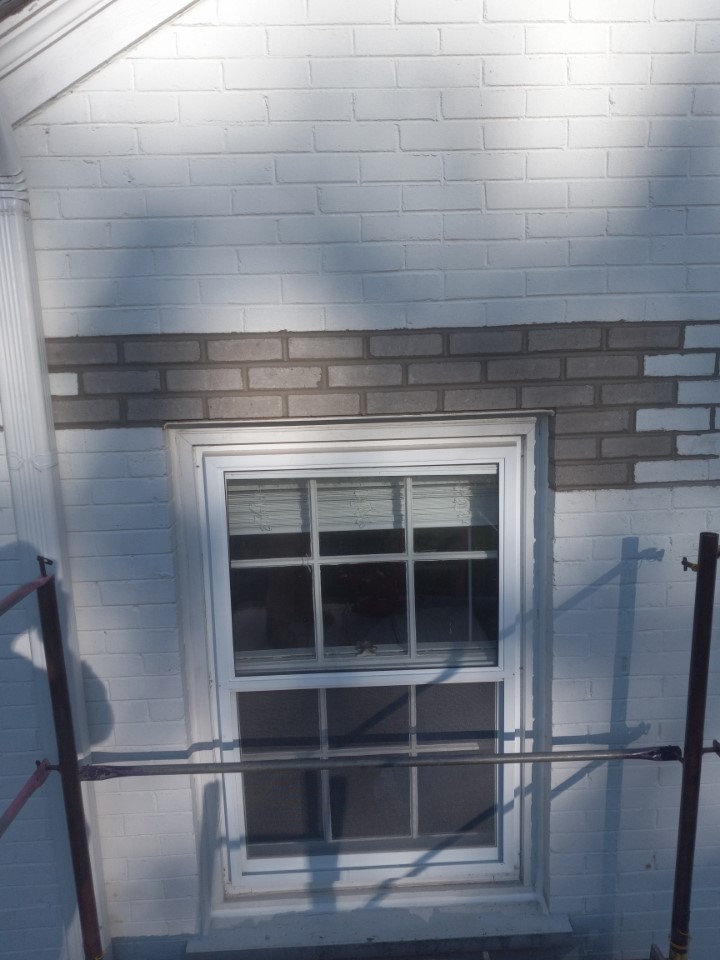Super Brickwork Pointing
Welcome to Super Brickwork Pointing, your trusted partner for domestic and commercial brick-pointing services. With our expertise and attention to detail, we deliver high-quality results. Our skilled team handles projects of all sizes, from homes to offices and more. We use top-notch materials and precise techniques to enhance the appearance and structural integrity of your brickwork. Customer satisfaction is our priority, and we strive to build lasting relationships through exceptional service and transparent communication. Contact us for a free quote tailored to your project. Choose Brickwork Pointing Contractors for expert guidance and outstanding results that stand the test of time.





Lime Pointing/Repointing
LIME POINTING SPECIALISTS | What is Lime Pointing ?
Lime pointing and repointing are vital processes in maintaining and restoring the integrity of brickwork. Lime pointing involves using lime mortar to fill and repair gaps between bricks, ensuring a strong and durable bond. Lime mortar is an excellent choice for historic or older buildings as it allows for flexibility, accommodating the natural movement of the structure without causing damage. It also offers breathability, allowing moisture to evaporate and preventing trapped water from causing deterioration. Repointing, on the other hand, is the process of removing deteriorated or damaged mortar joints and replacing them with fresh mortar. This helps to prevent water penetration, structural issues, and further deterioration. Lime pointing and repointing are essential techniques to preserve the beauty and longevity of brickwork, ensuring the structural stability of buildings for years to come.
Brickwork Repair
BRICKWORK REPAIR SPECIALISTS
Brickwork repair is a crucial aspect of maintaining the structural integrity and aesthetic appeal of buildings. Over time, various factors such as weathering, moisture, and settlement can lead to damages in brickwork, including cracks, crumbling mortar joints, and loose bricks. Brickwork repair aims to address these issues and restore the strength and stability of the structure.
One common method of brickwork repair is repointing. This involves removing deteriorated mortar joints and replacing them with fresh mortar. Repointing not only enhances the appearance of the brickwork but also prevents water penetration, which can cause further damage. Skilled craftsmen carefully remove the damaged mortar to an appropriate depth, ensuring a solid bond between the bricks.
Another aspect of brickwork repair is brick replacement. Damaged or cracked bricks are carefully removed and replaced with new ones that match the existing ones in terms of size, color, and texture. This process requires expertise to ensure a seamless integration and structural stability.
In some cases, strengthening techniques such as brick stitching or helical bar installation may be employed. These methods involve reinforcing the brickwork by inserting stainless steel bars or helical rods into the mortar joints to improve stability and prevent further cracking or movement.
Brickwork repair may also involve cleaning and restoration to remove dirt, stains, and efflorescence from the brick surfaces. Techniques such as pressure washing, chemical cleaning, or poultice cleaning are employed to restore the original appearance of the bricks.
It is essential to address brickwork issues promptly to prevent further deterioration and potential structural problems. Hiring experienced brickwork repair specialists ensures that the repairs are carried out with precision and in accordance with industry standards. By investing in brickwork repair, you can protect the value of your property, maintain its visual appeal, and ensure the safety and longevity of the structure.
Lintel Repair & Replacement
LINTEL REPAIR AND REPLACEMENT SPECIALISTS
Lintel repair and replacement are crucial aspects of maintaining the structural integrity and safety of buildings. Lintels are horizontal load-bearing elements typically made of steel, concrete, or stone, placed above openings such as doors, windows, or archways to support the weight of the structure above. Over time, lintels can deteriorate due to factors such as rust, moisture, or inadequate design, necessitating repair or replacement.
Lintel repair involves addressing issues such as rust, cracking, or deformation to ensure the lintel’s strength and stability. Depending on the extent of the damage, different repair techniques may be employed. Surface rust can be treated and removed using wire brushes and appropriate rust inhibitors. Cracked or damaged lintels may require reinforcement, such as adding steel plates or installing carbon fiber strips to enhance their load-bearing capacity.
However, in cases where the lintel damage is severe or extensive, lintel replacement becomes necessary. Lintel replacement involves removing the damaged lintel and installing a new one. The replacement lintel should be carefully selected to match the load requirements and architectural specifications of the building. It is essential to engage professionals who can accurately assess the load-bearing capacity and determine the appropriate lintel material and dimensions for the specific application.
There are several types of lintels used in construction, each with its advantages and considerations:
- Steel lintels: Steel lintels are popular due to their strength and versatility. They can be custom fabricated to specific dimensions and are often used in commercial and residential construction. Steel lintels are resistant to rust and can span longer distances, providing flexibility in design.
- Concrete lintels: Concrete lintels are durable and commonly used in masonry construction. They can be precast or cast in place, offering a cost-effective solution for smaller openings. However, concrete lintels may be susceptible to cracking and require proper reinforcement.
- Stone lintels: Stone lintels provide a traditional and aesthetic appeal, often used in historical or architectural restoration projects. They require skilled craftsmanship and can be customized to match the existing architectural style. However, stone lintels are heavy and may require additional support.
- Composite lintels: Composite lintels combine different materials, such as steel and concrete, to leverage their respective strengths. These lintels offer a balance of durability, strength, and versatility, allowing for customized solutions to meet specific structural requirements.
Lintel repair and replacement should be carried out by experienced professionals who can assess the extent of the damage, recommend the appropriate course of action, and ensure compliance with building codes and regulations. Proper maintenance and timely repair or replacement of lintels are essential to prevent structural issues, ensure the safety of occupants, and preserve the longevity of the building.

CUSTOMER REVIEWS
John Smith
Repointed our semi detached house and we was getting driving rain on our gable causing damp. Super Brickwork Pointing ground out the old damaged mortar and repointed our whole house. would recommend them to anyone needing pointing!
Jamie
We bought a new house and wasn't happy with how the bricklayers had pointed the brickwork. got in touch with Super Brickwork Pointing and they got the job done for us. Brilliant workers very professional and friendly people.
GET IN TOUCH WITH BRICKWOWRK POINTING TODAY!
Service Areas
21 Carlton Pl, Southampton SO15 2DY, UK